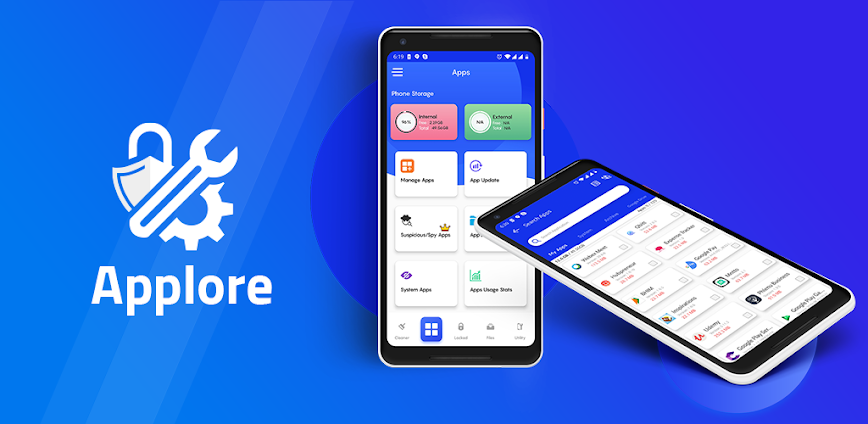Black Screen Mod Apk v.1.9.4 (Premium Unlocked)
- App Name Black Screen
- Version 1.9.4
- Sizes 10M
- Requirements Android 7.0
- Developer jApp
- Genre Tools
- Updated Nov 09, 2025
- Platform GooglePlay
- 1 Understanding APKs: The Core of Android Applications
- 2 Navigating the World of APK Installation: Benefits and Risks
- 3 Safeguarding Your Device: Best Practices for Secure APK Installation
- 4 Beyond Installation: Optimizing Android Performance for Longevity
- 5 Conclusion: Mastering Your Android Experience with Knowledge and Caution
In an increasingly mobile-first world, smartphones have become indispensable tools for communication, productivity, and entertainment. The Google Android ecosystem, in particular, offers unparalleled flexibility, allowing users to customize their devices and access a vast array of applications. While the official Google Play Store serves as the primary gateway for app acquisition, many users explore alternative methods, primarily through the installation of Android Package Kits (APKs). This practice, often referred to as “side-loading,” unlocks possibilities ranging from accessing geo-restricted apps and beta versions to restoring older software iterations. However, this flexibility comes with inherent risks, necessitating a thorough understanding of secure installation practices and ongoing device optimization. As mobile technology continues to evolve rapidly, staying informed about the nuances of APK management and Android performance tuning is crucial for maintaining device integrity and a seamless user experience, making this a perpetually relevant topic for millions of users worldwide.
Understanding APKs: The Core of Android Applications
An APK, or Android Package Kit, is the package file format used by the Android operating system for distribution and installation of mobile applications. Similar to how `.exe` files function on Windows or `.dmg` files on macOS, an APK file contains all the elements an app needs to properly install on your device. This includes the program’s code, resources, assets, certificates, and manifest file. Essentially, an APK is the archive format that facilitates the installation of an app on your Android device, whether it’s downloaded from the Google Play Store or from an external source.
The inherent design of APKs offers significant advantages. For developers, it provides a straightforward method for packaging their applications for distribution. For users, it means a universally recognized format that allows for broad compatibility across various Android devices and versions. This standardization is a cornerstone of the Android ecosystem’s openness, distinguishing it from more closed platforms. Understanding the fundamental nature of an APK is the first step towards safely leveraging the broader Android application landscape.
- Unified Packaging: An APK consolidates all necessary application components into a single file, simplifying distribution.
- Universal Compatibility: The standardized format ensures broad compatibility across diverse Android devices and versions.
- Developer Control: Developers can manage their app’s complete lifecycle, from packaging to updates.
- User Flexibility: Allows users to install applications outside of official app stores, providing greater choice.

Navigating the World of APK Installation: Benefits and Risks
While the Google Play Store remains the most common and generally safest avenue for acquiring Android applications, the ability to install APKs directly from other sources, often termed ‘side-loading,’ offers distinct advantages that appeal to a significant portion of the Android user base. One primary benefit is access to apps not available in your region due to geographical restrictions. Developers might also offer beta versions of their applications through direct APK downloads, allowing enthusiasts to test new features before wider release. Furthermore, side-loading can be crucial for installing older versions of apps, perhaps due to compatibility issues with newer updates or personal preference for an app’s previous interface or functionality. In some cases, niche or specialized applications might only be distributed directly by their creators via APKs, bypassing app store gatekeepers.
However, the flexibility of APK installation is intrinsically linked to heightened security risks. When you download an APK from an unofficial source, you lose the safety net provided by the Google Play Store’s robust security scanning and vetting processes. Malicious actors frequently exploit this by embedding malware, spyware, or adware within seemingly legitimate APKs. These compromised files can lead to data theft, unauthorized access to your device’s functions, performance degradation, and even financial fraud. It’s imperative for users to exercise extreme caution and diligence, understanding that the convenience of side-loading must always be weighed against potential cyber threats. Expert insights continually stress that the provenance of an APK is paramount; reputable sources are non-negotiable for mitigating risk.
- Early Access: Gain access to beta versions or unreleased features of applications.
- Geo-Unrestricted Content: Install apps that are not available in your geographical region.
- Older App Versions: Revert to or install previous iterations of an app for compatibility or preference.
- Bypassing Restrictions: Install apps that may not meet Play Store policies or are niche applications.
- Malware and Viruses: High risk of downloading compromised files containing malicious code.
- Data Theft: Malicious APKs can steal personal data, credentials, and sensitive information.
- Security Vulnerabilities: Unverified apps might exploit system vulnerabilities, leading to device compromise.
- Loss of Updates: Side-loaded apps may not receive automatic security or feature updates, leaving them vulnerable.
Safeguarding Your Device: Best Practices for Secure APK Installation
Given the inherent risks associated with side-loading, adopting a methodical and cautious approach is critical for anyone choosing to install APKs outside of official app stores. The cornerstone of secure APK installation lies in sourcing. Always download APKs from reputable and well-known websites or developers. If available, prioritize official developer websites over third-party aggregators, as these are less likely to be compromised. Many trusted platforms for specific types of APKs exist, but even then, vigilance is necessary. Before initiating any download, always read reviews, check user comments, and verify the website’s authenticity. A simple search for the app’s name along with “APK download review” can often reveal potential red flags.
Once you’ve identified a seemingly safe source, the next crucial step is to enable ‘Unknown Sources’ in your Android device’s settings – but only temporarily and with extreme caution. Navigating to Settings > Apps & notifications > Special app access > Install unknown apps will allow you to grant permission for specific browsers or file managers to install APKs. It is highly recommended to disable this permission immediately after installing your desired application to prevent any unauthorized future installations. Furthermore, before running the installation, consider using an APK scanner or a trusted antivirus application to scan the downloaded file for malware. These tools can often detect malicious code before it has a chance to execute on your device. Finally, always review the permissions requested by the app during installation. If an app requests permissions that seem unrelated to its core functionality (e.g., a simple game asking for camera and microphone access), it’s a strong indicator of potential malicious intent, and you should reconsider the installation. For a deeper dive into optimizing your mobile app experience and security, you might want to explore our comprehensive guide on Android security tips.
- Verify Sources: Only download APKs from trusted, official developer websites or highly reputable platforms. Avoid suspicious links.
- Enable & Disable ‘Unknown Sources’ Judiciously: Temporarily enable the ‘Install unknown apps’ permission for specific sources in your settings and disable it immediately after installation.
- Scan APK Files: Utilize a reliable antivirus or APK scanning tool to check for malware before installing any downloaded file.
- Review App Permissions: Scrutinize the permissions an app requests during installation; deny access if they seem excessive or irrelevant.
- Backup Your Device: Regularly back up your Android device to ensure data recovery in case of an unforeseen issue or malware infection.
- Stay Updated: Keep your device’s operating system and security software up to date to protect against known vulnerabilities.

Beyond Installation: Optimizing Android Performance for Longevity
Installing new applications, particularly numerous ones or those downloaded via APKs, can significantly impact your Android device’s overall performance. Over time, an accumulation of apps, cached data, and background processes can lead to slower operation, reduced battery life, and general system sluggishness. To ensure your Android device remains responsive and efficient, proactive optimization is essential. One of the most effective strategies involves regular app management. Periodically review your installed applications and uninstall those you no longer use. Many apps run background processes or consume data even when not actively in use, draining resources. Consider also managing app permissions more granularly; restrict background data usage or location access for apps that don’t absolutely require it.
Another crucial aspect of maintaining optimal Android performance is managing your device’s storage. Full storage can drastically slow down your phone. Regularly clear app caches (which can accumulate gigabytes of data over time), delete unnecessary files, and transfer large media files (photos, videos) to cloud storage or an external drive. Additionally, keeping your Android operating system updated is vital. System updates often include performance enhancements, bug fixes, and critical security patches that contribute to a smoother and more secure user experience. Regularly restarting your phone can also clear temporary memory and refresh system processes, often providing an immediate, albeit temporary, boost. For insights into the latest and most efficient Android utilities that can assist with managing your device, check out our featured list of top Android productivity apps.
- Regular App Audits: Periodically uninstall unused applications to free up storage and reduce background processes.
- Manage App Permissions & Notifications: Restrict unnecessary background activity and silence excessive notifications to conserve battery and CPU.
- Clear Cache & Data: Regularly clear app caches and temporary files to free up storage space and improve app responsiveness.
- Optimize Storage: Delete old downloads, unnecessary media, and transfer large files to cloud storage or external drives.
- Keep System Updated: Ensure your Android OS is always running the latest version for performance improvements and security patches.
- Monitor Battery Usage: Identify and manage battery-intensive apps through your device’s battery usage settings.
- Restart Regularly: A simple restart can often clear system memory and resolve minor performance glitches.
Furthermore, avoiding the installation of “task killer” apps or “RAM boosters” is generally recommended. While they promise to improve performance, they often interfere with Android’s built-in memory management, potentially causing more harm than good or even draining more battery. Instead, focus on genuine optimization techniques like those listed above. Understanding these principles allows users to not only enjoy the full spectrum of Android’s capabilities, including safe APK installations, but also to ensure their devices run smoothly for years to come. Staying informed about responsible digital practices is key to a robust mobile experience. To dive deeper into making your mobile experience even better, you can read our full guides and tutorials on Android optimization and app management.
Conclusion: Mastering Your Android Experience with Knowledge and Caution
The Android ecosystem thrives on its flexibility and the vast choices it offers to users, a significant part of which involves the ability to manage and install applications via APKs. This freedom, while empowering, comes with a critical responsibility: prioritizing security and maintaining device health. We’ve explored how APKs form the foundation of Android application distribution, their distinct advantages for accessing diverse content, and the undeniable risks posed by unverified sources. The insights shared underscore the importance of a vigilant approach, advocating for rigorous source verification, judicious permission management, and the crucial practice of scanning files before installation. These steps are not merely recommendations but essential safeguards in today’s evolving cyber landscape.
Beyond initial installation, the journey to a superior Android experience extends to continuous device optimization. Strategies ranging from diligent app management and storage hygiene to keeping your operating system updated are pivotal for ensuring sustained performance and longevity. By integrating these practices into your routine, you can mitigate common issues like sluggishness and battery drain, ensuring your smartphone remains a powerful and efficient tool. As mobile technology continues its rapid advancement, staying informed and adopting a proactive stance on both security and performance will be paramount. Users who embrace this balanced approach—leveraging Android’s flexibility with informed caution and consistent optimization—are best positioned to unlock the full potential of their devices, enjoying a seamless, secure, and enriched digital life well into the future.
Whats News
We’re always making changes and improvements to Black Screen. To make sure you don’t miss a thing, just keep your Updates turned on.In this update:
- Added Battery Percentage
- Added Shortcut Widgets
- Added Biometric Authentication
- Added Black Screen in Quick Tiles to quickly enable and disable
- Added bunch of new features
- Upgraded to Material You Theme
- Added pocket detection mode
- Added new clock styles
- Fixed crashes
- Votes: 1
- Comments: 3
Download Black Screen for Android for free.
Premium Unlocked





I disagree that exploring alternative app installation methods is so widespread. While some users do it, I think the vast majority stick to the Play Store for convenience and security reasons.
I disagree with the premise that alternative app installation methods are primarily driven by users wanting to customize their devices. Often, it’s about accessing apps not available on the Play Store due to regional restrictions or developer choices.
I disagree that exploring alternative app installation methods is primarily driven by customization. Often it’s about accessing apps not available on the Play Store due to regional restrictions or other limitations.